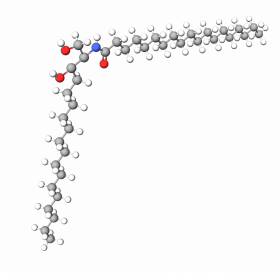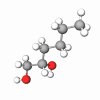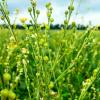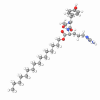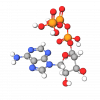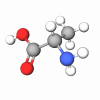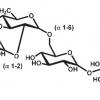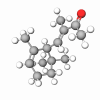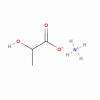The ceramides are a class of complex lipids discovered in the superior strata of the epidermis. Considered the "key molecule" of the epidermis, ceramides constitute 40-50% of the lipids in the stratum corneum and are primarily involved in maintaining the water level within the epidermal layers. Therefore, considerable research has been devoted to obtaining them (extraction, synthesis) and their cosmetic use. In-vivo studies have shown that damaged skin treated with Ceramide 2 has a significantly increased ability to retain moisture and reduce Transepidermal Water Loss (TEWL) - indicating a restructuring of the lipid layers within the epidermis and a reestablishment of the integrity of the cutaneous barrier.
Ceramides strengthen the cutaneous barrier and regulate the water flux across the stratum corneum.
Ceramide II (NG), also known as N-stearoylsphinganine or Ceramide 2, is similar to dermal cells' membrane molecules and is a replica of the natural type 2 ceramide that protects and repairs the cutaneous barrier of the skin. In addition, it renews the skin's lipid layer, reduces transdermal moisture loss, and improves water-binding ability. As a result, the tropical application of Ceramide 2 enhances the state and appearance of human skin, preventing and reducing the visible signs of aging.
It promotes natural, moisture-rich skin that is more likely to resist the early onset of aging. In addition, in high-end formulas, Ceramide NG may be combined with peptides (e.g., Palmitoyl Hexapeptide-12), which enhances the effectiveness of the entire formulation, delivering better results with lower concentrations.